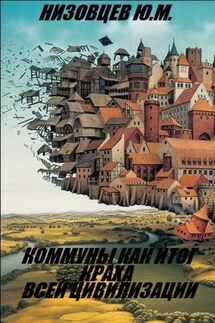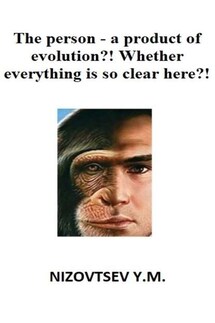The driving force and source of development of the person and his communities - страница 12
And the person himself often cannot predict what in the next moment will become predominant: love or hatred, anger or sympathy, sincerity or hypocrisy, timidity or courage, discretion or recklessness.
The lowest consciousness "feeds" only on the sensations that give it everything, including the harmony of existence, i.e. something acceptable and even pleasant in our understanding in a certain combination of feelings if, of course, to distract from fight of each being for survival. Therefore, it does not wish to lose the sensations at all.
Similar the type of consciousness has natural egocentrism, automatically seeking to survive, no matter what.
In the process of development of the living beings, this type of consciousness undergoes relatively minor changes, since it is not able to withdraw own basic property – an unconscious desire for survival, based on the primordial activity of any living thing.
The highest consciousness which is contained in the person at any level of its development is radical contrast to the lowest consciousness.
In the presence of the highest consciousness in the living being, it begins as though to see the light, becoming not so much "poured" in the environment, how many separated from it, and, so it acquires the opportunity to look at it and on oneself from the outside, to appreciate this ratio in attempts to consciously set to itself goals in mind certain shortcomings in one's own existence, which, in the opinion of this being, could be overcome, and to try to obtain implementation of goals in actions.
All this obviously drops out of an instinctive and reflex sphere of action of the lowest consciousness, and even begins to contradict it as the highest consciousness often neglects utilitarian reasons, chasing something to unattainable, but kind heart and mind.
Being separated in self-consciousness from the environment, this being, in the course of time, in its development in relationship with the beings, which are like him, begins to feel the need for new forms, different from the primitive communal relations of still wild people, completely absorbed in the struggle for survival. In mutual communication this creature reaches such a limit that its various conscious aspirations begin to pour into significant changes in the environment, and not just in its use.
From gathering, a person passes to cattle breeding, growing cereals, other forms of economic activity and the corresponding exchange of the labor products. Inequality, ownership, the struggle for the preservation and augmentation of property, for power and et cetera are arising, that in turn requires establishment of some institutions of order in order to avoid chaos – the local states in the bosom of a growing and improving civilization were being formed.
New forms and institutions, on the one hand, ensure the accelerated development of communities already in a structured form, that is, as the states with the bodies of governance, security, courts, etc., and on the other hand, do not allow to the states to fall apart because of the contradictions, invariably tearing-apart the last.
Despite a certain progress in development of human communities according to development of self-consciousness, the essence of human consciousness which is expressed in dualism, more precisely, in divergent life-aspirations of the lowest and highest form of consciousness does not disappear anywhere, and cannot be substantially modified.









